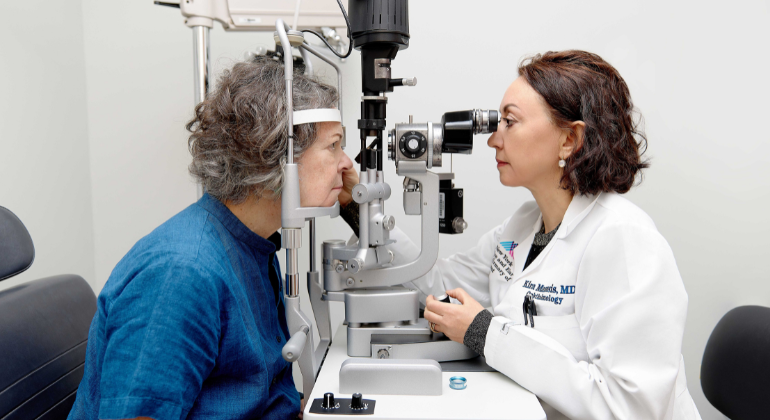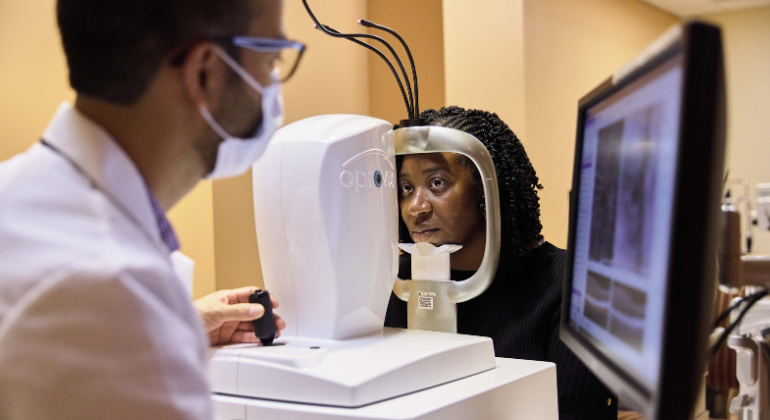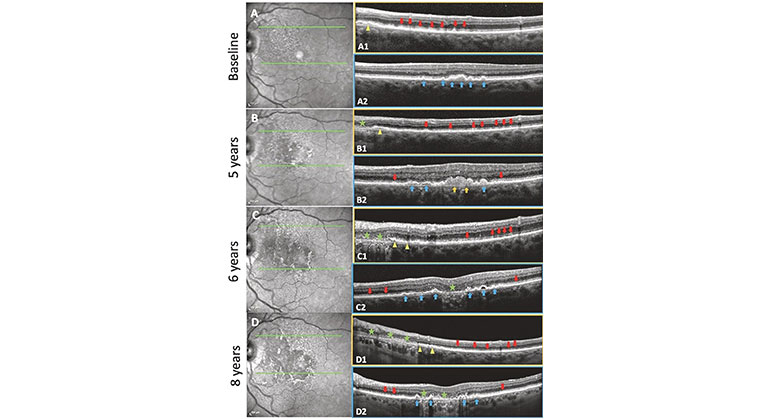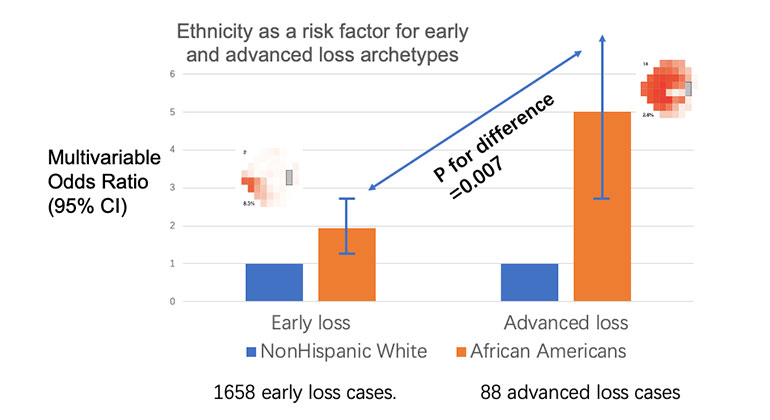New Research Suggests Certain Yoga Positions May Impact Eye Pressure in Glaucoma Patients
New Study Highlights Importance of Patient Education During Glaucoma Awareness Month
Glaucoma patients may experience increased eye pressure as the result of performing several different head-down positions while practicing yoga, according to a new study published by researchers at New York Eye and Ear Infirmary of Mount Sinai (NYEE) in the journal PLOS ONE.
Glaucoma is the leading cause of irreversible blindness in the United States and can dramatically affect the quality of life for patients with moderate to severe visual loss. Damage to the optic nerve occurs in glaucoma patients when fluid pressure inside the eye rises. Elevated intraocular pressure (IOP) is the most common known risk factor for glaucomatous damage and, at the current time, the only modifiable one for which treatment has a proven effect on preventing or slowing the progression of the disease.
"While we encourage our patients to live active and healthy lifestyles, including physical exercise, certain types of activities, including pushups and lifting heavy weights, should be avoided by glaucoma patients due to the risk of increasing IOP and possibly damaging the optic nerve," said Robert Ritch, MD, senior study author and the Shelley and Steven Einhorn Distinguished Chair and Director, Glaucoma Research, NYEE. "This new study will also help clinicians advise their patients on the potential risk associated with various yoga positions and other exercises that involve inverted poses."
In previous research, studies and case reports had tested only the headstand position, which showed a marked two-fold rise in IOP. In the new study, researchers had healthy participants with no eye-related disease and glaucoma patients perform a series of inverted yoga positions, including downward facing dog, standing forward bend, plow, and legs up the wall. They captured the IOP in each group at baseline seated, immediately assuming the pose, two minutes while holding the pose, right after they performed each pose in the seated position, and then again 10 minutes after resting in the seated position.
Both normal and glaucoma study participants showed a rise in IOP in all four yoga positions, with the greatest increase of pressure occurring during downward facing dog. When the measurements were taken after the participants returned to a seated position and again after waiting ten minutes, the pressure in most cases remained slightly elevated from the baseline.
"While our study results don’t show a dramatic difference in IOP between the normal participants and those with glaucoma, we believe that additional research, with a larger study population and longer durations of practicing the inverted positions is warranted," said first author Jessica Jasien, M.En., research associate with the Shelley and Steven Einhorn Clinical Research Center at NYEE. "As we know that any elevated IOP is the most important known risk factor for development and progression of nerve damage to the eye, the rise in IOP after assuming the yoga poses is of concern for glaucoma patients and their treating physicians. In addition, glaucoma patients should share with their yoga instructors their disease to allow for modifications during the practice of yoga."
The research team emphasizes the importance of educating glaucoma patients on all of the risks and benefits of relating to physical exercise and their overall vision health, as well as any other factors that might impact their glaucoma progression, including diet, lifestyle choices, and other co-morbid conditions such as diabetes.
For more facts about glaucoma and tips regarding glaucoma prevention and treatment, please visit the Glaucoma Awareness Month press release on the NYEE website.
About the Mount Sinai Health System
Mount Sinai Health System is one of the largest academic medical systems in the New York metro area, with 48,000 employees working across seven hospitals, more than 400 outpatient practices, more than 600 research and clinical labs, a school of nursing, and a leading school of medicine and graduate education. Mount Sinai advances health for all people, everywhere, by taking on the most complex health care challenges of our time—discovering and applying new scientific learning and knowledge; developing safer, more effective treatments; educating the next generation of medical leaders and innovators; and supporting local communities by delivering high-quality care to all who need it.
Through the integration of its hospitals, labs, and schools, Mount Sinai offers comprehensive health care solutions from birth through geriatrics, leveraging innovative approaches such as artificial intelligence and informatics while keeping patients’ medical and emotional needs at the center of all treatment. The Health System includes approximately 9,000 primary and specialty care physicians and 10 free-standing joint-venture centers throughout the five boroughs of New York City, Westchester, Long Island, and Florida. Hospitals within the System are consistently ranked by Newsweek’s® “The World’s Best Smart Hospitals, Best in State Hospitals, World Best Hospitals and Best Specialty Hospitals” and by U.S. News & World Report's® “Best Hospitals” and “Best Children’s Hospitals.” The Mount Sinai Hospital is on the U.S. News & World Report® “Best Hospitals” Honor Roll for 2025-2026.
For more information, visit https://www.mountsinai.org or find Mount Sinai on Facebook, Instagram, LinkedIn, X, and YouTube.
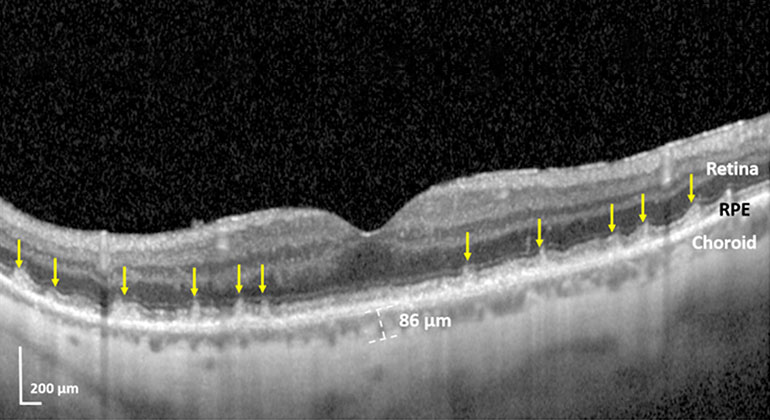
Blinding Eye Disease Strongly Associated With Serious Forms of Cardiovascular Disease
Nov 17, 2022 View All Press Releases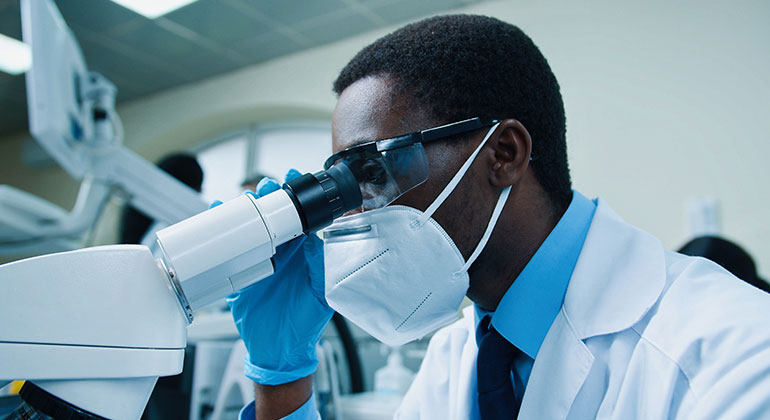
High-Tech Imaging Offers New Way to Detect Signs of Early Glaucoma
Aug 02, 2022 View All Press Releases
Blinding Eye Disease Is Strongly Associated With Heart Disease and Stroke
Jul 12, 2022 View All Press Releases
